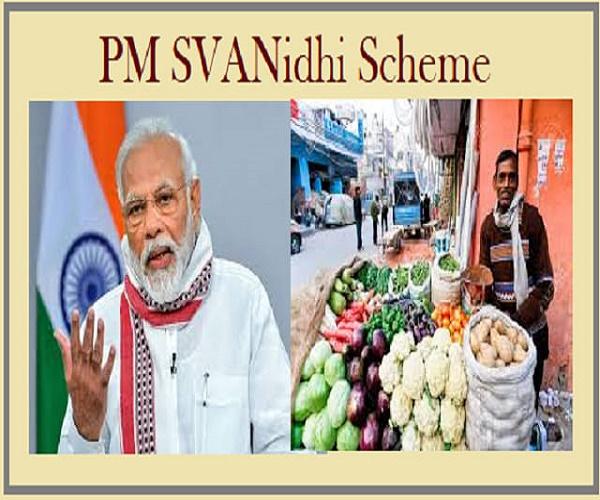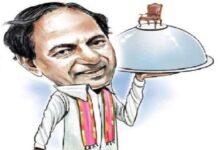Instead of credit, the government should have converted it into direct income benefit, a cash grant, as livelihood support to restart economic activity in a regular way.
PM SVANidhi – PM Street Vendor’s Atma Nirbhar Nidhi – a special microcredit program for street vendors started this week on July 2. As per the scheme, the vendors can avail a working capital loan of up to Rs 10,000, which is repayable in monthly installments in the tenure of one year. The scheme covers 108 cities in the first phase.
However, it’s yet to be seen whether the current relief package will provide any modicum of relief for the livelihood of street vendors and emerge as a pathway for combatting unemployment and poverty for many urban poor in the post-lockdown period.
Street vendors constitute an integral and legitimate part of the urban retail trade and distribution system for the daily necessities of the general public. They represent 4% of the urban workforce across India and play a variety of roles in city life. The street vending economy approximately has a parallel turnover of Rs 80 crore a day and every street entrepreneur or trader supports an average of three others as employees or partners or workers on commission.
Vending provides a source of low paying but steady employment to many migrants and urban poor, while simultaneously making city life affordable for others – as vendors provide a key link in the distribution system of food and other critical goods at affordable prices. Street vendors are the main source of food security for many households and are also integral to the cultural heritage and ethos of cities in India.
The lockdown in Delhi came down harshly on street vendors, as it did for many other workers in the city’s large informal economy. Streets became eerily quiet, and with the absence of any foot traffic, the city’s vendors lost their source of income and were confronted with hunger and deprivation. Many others, such as entrepreneurs and producers whose products are sold by the vendors, suddenly faced the same fate.
A study of women vendors in Delhi, mostly found in weekly haats or street-side or footpath stalls, found that the women vendors have completely lost their livelihoods, with 97.14% of the respondents reporting that they had been adversely affected by the lockdown. Many vendors in Delhi reported a drastic decrease in income even after the lockdown opened.
Much of the meager savings of street vendors dried up during the lockdown period, many are either consuming savings or have been pushed into debt at high-interest rates. Since most of the street vendor population is made up of migrants, the burden of house-rent is an issue of concern – both in the lockdown period and post-lockdown.
With India opening up after the lockdown, what is needed now is swift action and support for street vendors, not only to secure their safety and earnings but also to facilitate the vital work they could to be doing to promote food security in a time of humanitarian crisis. Below are two critical steps that governments could take to support street vendors now.
Provide direct support, de-linked from existing registration requirements: As the city returns to normalcy and vending resumes, vendors who have been at home for months will need direct income benefits to resume their work.
The state’s stimulus package of Rs 5000 crore for nearly 50 lakh vendors does acknowledge the grave impact of their loss of livelihood. The intended relief for vendors is a credit loan that will provide an initial working capital of INR 10,000 for all vendors, but will it suffice when they have no income and zero savings? Instead of credit, the government should have converted it into direct income benefit, a cash grant, as livelihood support to restart economic activity in a regular way. The vendors need income support to be able to restart work, and if they are not able to do so, how will they return the loan?
In addition, government relief and support need to be de-linked from very rigid registration requirements, as very few vendors have been registered in India. In Delhi, out of roughly 3,00,000 street vendors, only about 1,31,00 have some form of occupational identification. If the criteria for any kind of cash grant or livelihood support is linked to occupational identification by the state, then the government should also accept registration with a workers’ organization or union as a proxy for government-issued vending passes.
Street vendors with vending certificates, identity cards, and documented in the enumeration are likely beneficiaries. Others can avail of the benefits provided they provide a letter of recommendation from the ULBs. Activists on the ground point out that, given the track record of our ULBs, it is hard to believe that they would provide letters of recommendation to vendors left out of surveys and not possessing any valid document of vending.
Prior to the lockdown, the town vending committees (TVCs) in Delhi were under the process of surveying vendors for the allocation of space within vending zones. In continuing this work, TVCs have a good opportunity to design vending zones keeping in mind the need for social distancing. In addition, cooked food vendors need training in social distancing and hygiene, and vendor organizations can play an important role in such training and market reorganization. The National Association of Street Vendors of India (NASVI) for example, is working to provide hygiene and social distancing training to cooked food vendors.
In coordination with vendors, schemes can be developed to allocate specific areas and days to different types of vendors – allowing more to work and earn. Civil society organizations can help the government identify the same. For example, vendors selling different sorts of goods can work in shifts. Fresh and cooked food vendors can operate during periods of high foot traffic when people are on their way home and stop to buy vegetables. The government also needs to alleviate concerns of consumers around hygiene by providing for hand-washing stations or sanitizers for vendors.
The post-COVID-19 world must acknowledge the role of vendors in addressing urban food security even as India grapples to feed the millions that the extended lockdown has left hungry. Government emergency supplies are just relief measures, what we need to do is make street vending robust and harness the power of vendors as critical links in supply chains. Only then will we able to avert the food security and employment crisis, that currently stares us in the face.
The gains made in the past in India cannot be lost in the wake of the COVID-19 crisis. A milestone was reached in 2010 when the Indian Supreme Court affirmed that street hawking is a fundamental right under the Indian constitution. In March 2014, the parliament of India adopted the Street Vendors (Protection of Livelihood and Regulation of Street Vending) Act.
This is arguably one of the best examples of inclusive legislation for street vendors in the world. The stimulus relief for the vendors must be in the spirit enshrined in this law, and vending must be seen as a key pathway to poverty alleviation of the urban poor in India. #KhabarLive #hydnews







